How do we do it? It’s really not a secret, but many people have been intrigued by how veterinarians go about figuring out what’s wrong with your pet. It’s hard…but after a while, once you’ve done it, it’s not so much if you follow a system.
There are 3 parts to coming to a diagnosis. Then there’s a lot of things that go into coming up with a treatment plan. But to start, let’s talk about the 3 parts of making a diagnosis.
1. History.
This is where you, the pet owner, are the most important. I’m fond of saying your pet isn’t going to tell me where it hurts…or what he ate….or what he was doing last night. That comes from you. Clearly, we wouldn’t be seeing your pet if you didn’t think something was up. If you’ve been through this with us before you know we will ask a lot of questions.
When did the problem start and how long has this been going on? Is he eating? Drinking? More? Less? Any vomiting? Diarrhea? What did it look like? Accidents in the house? How’s his attitude? Active? Still happy? Droopy? Lethargic? Coughing? Sneezing?
I’ve found that many dogs will eat no matter how sick they are (think Labrador Retriever or Beagle) and many cats won’t eat at all even if there’s hardly anything wrong. In general, the first thing a cat stops doing when he gets sick is eat. The last thing he starts to do upon recovery is eat. I like to say to cat owners that if your cat is still eating, whatever it is that’s bothering him can’t be imminently bad. They’re eating.
Is your pet limping? All four? Which leg? Holding it up? Skipping? Dipping? How long? Can you associate it with any particular event or activity?
Itching? Scratching? Head shaking? Where is he fussing? All over? Just the feet? Are you using flea and tick products? Which one? How much time does he spend outside? Has he visited someplace other than your own yard? Has been around other pets or animals?
Does he have a head tilt? Circling? What’s his posture? Where does he place his paws? Does he know where his feet are ? Paw pinch? Can he feel it? Dragging a paw? Painful? numb? We have ways to figure it out.
We like people to be precise. We like to hear “2 days” as opposed to “awhile”. We’ll ask more questions. We’ll get it out of you. Nothing personal. It’s OK to say, “I’m not sure” or “I don’t know”. To me, if you did not notice something it usually means it wasn’t very significant. If you don’t think he’s drinking a lot of water, he probably isn’t.
….then we get to the stuff we need to do.
2. Physical Exam
Interestingly, this can be the easiest and sometimes the least useful of the 3 parts of a diagnosis.
We take the vitals; age, weight, temperature, heart rate, respirations…sometimes blood pressure and compare it to information we may have collected at previous visits. We check the gums for changes in color; pink? red? pale? blue? How is the pulse? Strong and regular? Thready? The eyes? Clear? Inflamed? Are the pupils equal? Do they respond properly to light? How are the lymph nodes…all over the body. Are they enlarged? How does his heart sound? Regular? Irregular? Do we hear a murmur? Are the lungs clear? Raspy sounds? Can we elicit a cough?

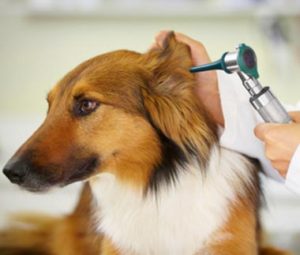

Let’s see him walk? Limping? Can we illicit any pain? You should know some dogs/breeds are better at showing pain than others. Some are pretty stoic (like Greyhounds) and don’t express their pain much at all. Some toy breeds, like Chihuahuas, will act painful if you look at them cross eyed. Cats are all over the map. Some will just sit there and sit there and sit there acting like nothing is wrong than lash out like a Tasmanian Devil. Then others, will freak out and act like the world is coming to an end the moment they enter the front door. You know who you are.
The art in these cases is to know the difference and appreciate what’s meaningful and what’s an act. It’s why we call it practice.
And finally, the 3rd leg of the stool….
3. Tests
This is where expenses can come into play. Dr.Dinwoodie and I are very sensitive to this and try assiduously to run only the tests we think are going to be the most practical and cost effective. Veterinarians do not have the virtue of insurance companies footing the bill for every test under the sun. Mostly, you’re paying for all of this so we want to be as transparent as possible. On the other hand, we also don’t have the Sword of Damocles hanging over our heads if we do not run every test and exhaust every diagnostic avenue in an effort to avoid the charge of “negligence”. We try very hard to give our clients as many options as we can to keep the fees under control while we get to a resolution of your pet’s problem.
Blood work is the core of our testing protocol. We can do a lot of testing “in house” now and frequently get results within 15 minutes. When I first started in practice, blood results frequently didn’t come back for 2 or 3 days….and they were not nearly as accurate or comprehensive as they are now. I’d say the most significant advancement in modern veterinary medicine is the advancement of quick, reliable lab results for our patients.
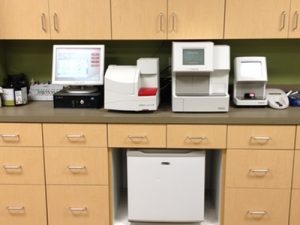
IDEXX In House Lab Station
X-rays. We still use the same X-ray machine that was purchased when the Goodfriends Veterinary Clinic was started back in the early 90’s. What’s changed is we now use digital screens to record the images and read them on a computer. No more film. No more developing. No more chemicals. Fast, clear and reliable. With the internet we can now e-mail images to specialists and get second opinions within hours…at a fraction of the cost of a referral. Super duper.

Digital Radiology
Ultrasound. This was invented after I graduated from veterinary school. We started using this technology in the 90’s and now it’s a cornerstone of veterinary testing. We have our own ultrasound machine, but we also frequently have Dr. Patty Hogan, a board certified radiologist, come to our office and use her expertise and more sophisticated equipment to get an answer.

Ultrasound
Frequently we send blood out to an over night lab; IDEXX. They’re terrific. Most of the time the results are back when we come in the next morning. They also do some pretty unique tests that were never around back in my youth. Hormones can be measured. Very specific enzymes and proteins that can be keys to very rare…but often treatable diseases are now commonly available. We can even measure drug levels for chronic management of certain diseases, like phenobarbitol for seizures.
There’s more…but in the end we have to put it all together and come up with some diagnostic ideas. It’s like playing the game of “Clue”. I love this part. Problem solving. When I talk to kids who think they want to be veterinarians I ask them how much they like to play games. Puzzles ( I’m addicted to Sudoku)? Do they like to solve problems? Do they like math? Most don’t…but those skills that help a student solve math problems come in pretty handy for us veterinarians. Algorithms.
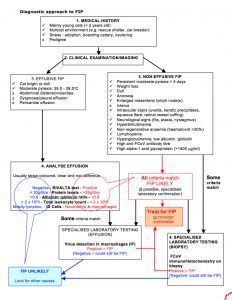

Statistics. Knowns and unknowns. Make a list. Can you rule certain things in or out based on your history, exam or tests? What are the odds of…..? A little bit like Clue. A little bit of algebra. A little bit of experience…….





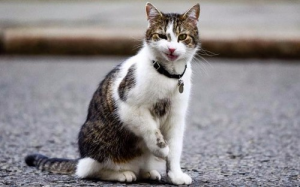
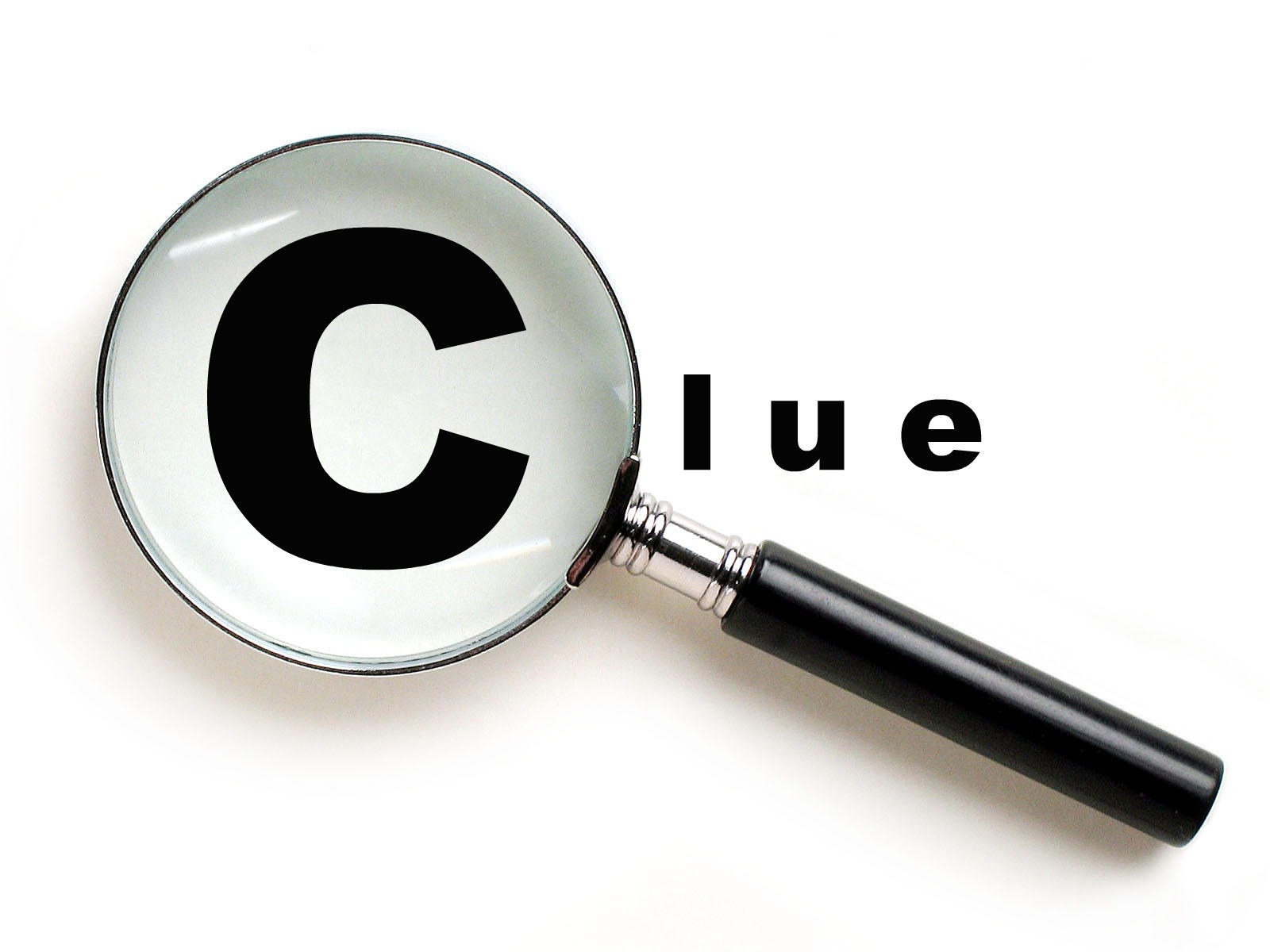












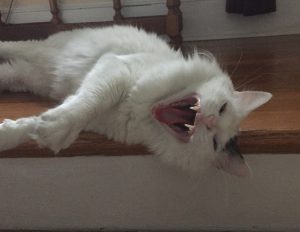


Recent Comments